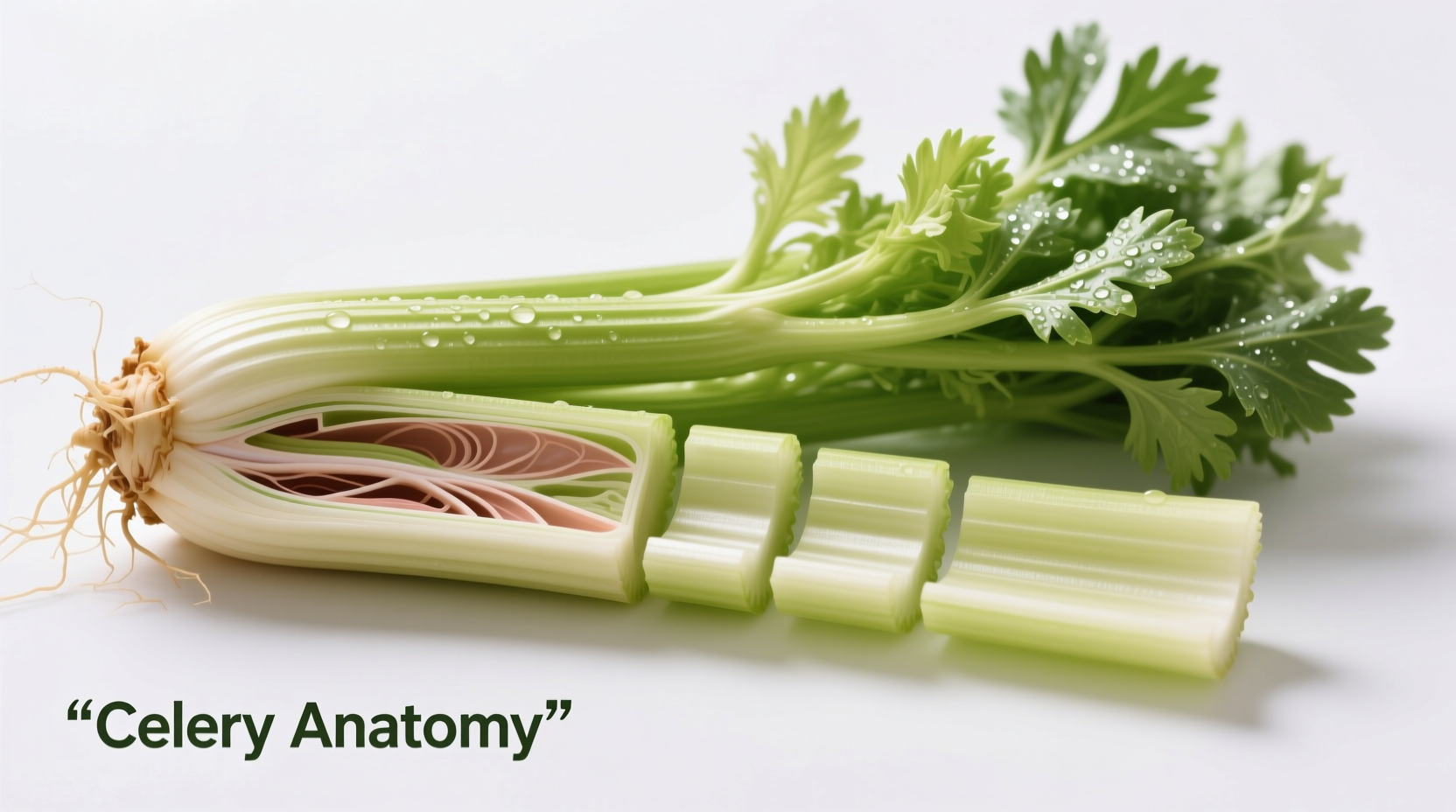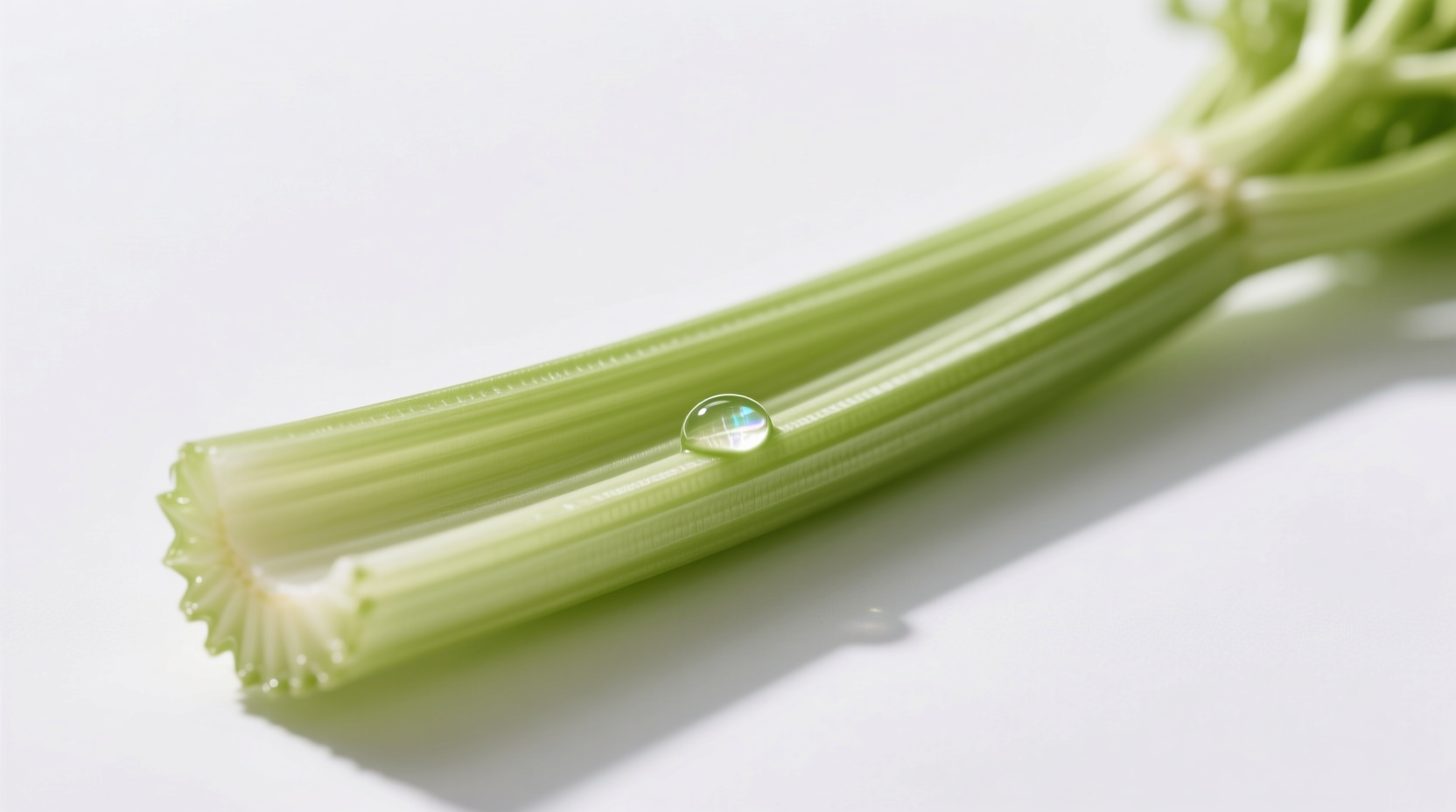Understanding Celery Anatomy: Beyond the Grocery Label
When you pick up a bunch of celery at the store, you're holding what botanists call a petiole - a collection of individual ribs. This common terminology confusion causes real problems in the kitchen. Professional chefs and food scientists consistently use "rib" to describe each separate piece, while "stalk" technically refers to the entire plant's central stem.
| Common Term | Botanical Term | Culinary Reality |
|---|---|---|
| Celery stalk (grocery store) | Bundle of petioles | Collection of 8-10 individual ribs |
| Individual celery piece | Petiole (rib) | Single curved segment with strings |
| Celery root | Celeriac | Different cultivar entirely |
Why Rib Terminology Matters in Cooking
Understanding celery ribs isn't just botanical pedantry - it directly impacts your cooking results. The USDA Agricultural Research Service confirms that different sections of the celery rib contain varying concentrations of psoralens and phthalides, compounds responsible for celery's distinctive flavor profile and potential health benefits.
When recipe developers specify "1 rib of celery," they're asking for precise flavor control. Using the entire grocery "stalk" instead of a single rib can triple the celery flavor in your dish, potentially overwhelming other ingredients. This distinction becomes critical in delicate preparations like consommé or subtle vegetable broths.

Culinary Applications by Rib Section
Each section of the celery rib offers unique properties that professional chefs leverage for specific applications. Understanding these differences transforms how you approach recipe development and execution.
The Base (Bottom Third)
The thickest part of the rib provides maximum crunch with the mildest flavor. This section works best for:
- Raw applications where texture matters most
- Crudités with creamy dips
- Adding subtle crunch to salads
- Vegetable stocks requiring neutral background notes
The Middle Section
Offering the perfect balance of flavor and texture, this versatile portion shines in:
- Soffritto and mirepoix foundations
- Stir-fries requiring even cooking
- Cream soups where flavor integration matters
- Roasting for caramelized complexity
The Leafy Top
Often discarded but packed with intense herbal notes, these tender portions excel in:
- Finishing sauces and soups
- Compound butters
- Herb blends with parsley and tarragon
- Homemade vegetable broth for depth
Nutritional Profile Across the Rib
Research from the National Institutes of Health shows nutritional variation along the celery rib. The leafy portions contain significantly higher concentrations of beneficial compounds:
- Base section: Highest water content (95.4%), lowest fiber density
- Middle section: Balanced mineral content including potassium and calcium
- Leafy tops: 3x more apigenin (anti-inflammatory compound) than base
For maximum health benefits, incorporate all sections of the celery rib into your cooking rather than discarding the leafy portions.
Practical Preparation Techniques
Professional kitchens employ specific techniques to maximize celery rib performance. These methods address the common challenge of stringiness while preserving flavor integrity.
String Removal Methods
The fibrous strings running along celery ribs can be unpleasant in finished dishes. Two effective approaches:
- Peeler technique: Use a vegetable peeler to remove outer strings while preserving maximum flesh
- Blanching method: Dip ribs in boiling water for 30 seconds, then plunge in ice water to loosen strings
Flavor Preservation Tips
To maintain optimal flavor and texture:
- Store ribs submerged in water in airtight containers
- Use within 5-7 days for peak freshness (per FDA food storage guidelines)
- Never wash ribs until ready to use to prevent premature wilting
Common Culinary Mistakes to Avoid
Even experienced home cooks make these celery rib errors that compromise dish quality:
- Mistake: Using entire grocery "stalks" when recipes specify ribs
Solution: Count individual curved segments - most grocery bunches contain 8-10 ribs - Mistake: Discarding leafy tops
Solution: Freeze tops for stock or finely chop for finishing dishes - Mistake: Overcooking ribs until mushy
Solution: Add to soups in last 10-15 minutes for ideal texture
When Celery Rib Substitutions Make Sense
Understanding context boundaries helps determine when substitutions work. The Food and Agriculture Organization notes that fennel bulb provides the closest flavor profile for raw applications, while bok choy stems mimic celery's texture in cooked dishes.
However, for authentic French mirepoix or Italian soffritto, nothing replicates celery's unique flavor chemistry. These foundational techniques require actual celery ribs for proper flavor development.
Conclusion: Mastering the Celery Rib
Recognizing and properly utilizing individual celery ribs transforms your cooking precision. By understanding the distinct properties of each rib section - from the mild base to the flavorful leafy tops - you gain greater control over texture, flavor balance, and nutritional content in your dishes. This knowledge bridges the gap between grocery store terminology and professional culinary practice, elevating everything from simple salads to complex sauces.











 浙公网安备
33010002000092号
浙公网安备
33010002000092号 浙B2-20120091-4
浙B2-20120091-4